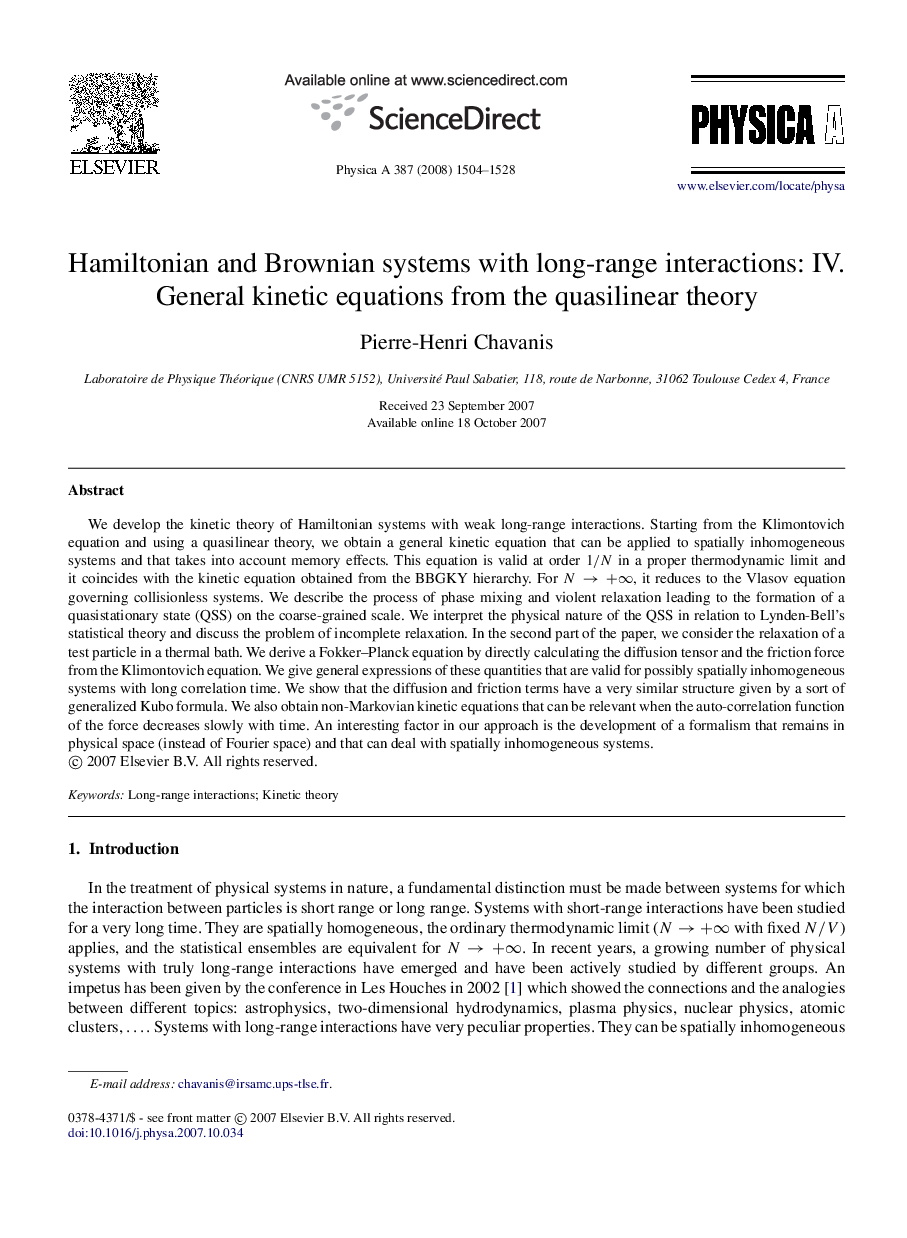| Article ID | Journal | Published Year | Pages | File Type |
|---|---|---|---|---|
| 979422 | Physica A: Statistical Mechanics and its Applications | 2008 | 25 Pages |
We develop the kinetic theory of Hamiltonian systems with weak long-range interactions. Starting from the Klimontovich equation and using a quasilinear theory, we obtain a general kinetic equation that can be applied to spatially inhomogeneous systems and that takes into account memory effects. This equation is valid at order 1/N1/N in a proper thermodynamic limit and it coincides with the kinetic equation obtained from the BBGKY hierarchy. For N→+∞N→+∞, it reduces to the Vlasov equation governing collisionless systems. We describe the process of phase mixing and violent relaxation leading to the formation of a quasistationary state (QSS) on the coarse-grained scale. We interpret the physical nature of the QSS in relation to Lynden-Bell’s statistical theory and discuss the problem of incomplete relaxation. In the second part of the paper, we consider the relaxation of a test particle in a thermal bath. We derive a Fokker–Planck equation by directly calculating the diffusion tensor and the friction force from the Klimontovich equation. We give general expressions of these quantities that are valid for possibly spatially inhomogeneous systems with long correlation time. We show that the diffusion and friction terms have a very similar structure given by a sort of generalized Kubo formula. We also obtain non-Markovian kinetic equations that can be relevant when the auto-correlation function of the force decreases slowly with time. An interesting factor in our approach is the development of a formalism that remains in physical space (instead of Fourier space) and that can deal with spatially inhomogeneous systems.
